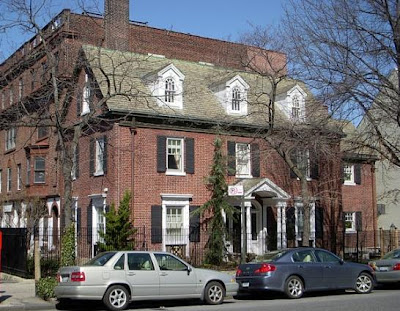The city's Landmarks Preservation Commission held a public hearing last week for the proposed Park Slope Historic District Extension.
We were scheduled for around 1pm, but the Commission was running about two hours late. By the time the Park Slope agenda item was heard, many of our supporters had had to leave, but around 25 people or so remained. All but one spoke in favor of the extension. The one exception was a property owner who cited "philosophical, sociological, and aesthetic" reasons for his opposition.
Both Council Members Brad Lander and Steve Levin were present and expressed strong support for the extension. Marty Markowitz was on hand earlier in the day, wearing one of our "Park Slope Historic District: Expand It!" buttons, but had had to leave, so his representative expressed the Borough President's support. Representatives of Joan Millman, Jim Brennan, and Velmanette Montgomery delivered supporting remarks.
Bob Levine, co-chair of Brooklyn Community Board 6, testified that his committee had held its own public hearing and had voted to support the extension.
The big surprise, to this attendee, was when the chair of the Park Slope Chamber of Commerce/7th Avenue Merchants rose to state that his group also supported the extension!
At the end of the hearing, LPC Chair Robert Tierney waved a big stack of additional letters from those who had expressed their support in writing. We've heard that the written support included letters from both New York Methodist Hospital and the Fifth Avenue Committee!
The Park Slope Civic Council offers heartfelt thanks to everyone took the time to speak out or to write in support of the extension. It is really great to see the neighborhood pulling as one for this cause.
Basically nothing was decided by the LPC at this time. It was just a public hearing. We understand that the building research has not even begun yet, so actual designation is still a long way off.
 9th Street & 6th Avenue - s.w. corner
9th Street & 6th Avenue - s.w. corner Additional information on Hornum is available in the LPC's Mott Haven East Historic District Desgination Report:
Additional information on Hornum is available in the LPC's Mott Haven East Historic District Desgination Report:
































